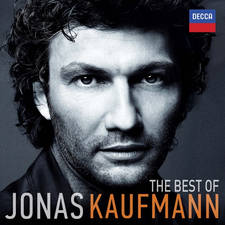10 most weird and wonderful musical instruments created... ever
14 October 2024, 16:18 | Updated: 15 October 2024, 11:37

Have you ever seen a picture or painting of an instrument and thought, “What the heck is that?” Join us as we count down our top ten most weird and wonderful instruments.
Listen to this article
Loading audio...
-
The Wagner Tuba
When it came to composing his epic four-part operatic Ring Cycle, Wagner was searching for an unearthly sound that would best represent the Norse Gods residing in ‘Valhalla’. Excited by the recent discovery of the Lur – an ancient Nordic Horn, Wagner thought big and decided to invent his very own, modern Nordic Horn, with the help of Adolphe Sax (of saxophone fame). The result: the Wagner Tuba, which has confounded and bewildered audiences since its first appearance on stage in 1876.

The Wagner Tuba
-
Glass Armonica
A shimmering, ethereal and bewitching instrument, the glass harmonica was extremely popular in the late 18th century, with immortal composers such as Beethoven and Mozart writing for leading players of the time. Based on the concept of moving a moist finger around the rim of a wine goblet to produce tones, prolific polymath Benjamin Franklin popularised the instrument. Sadly, increasing rumours that playing the instruments could cause madness meant that many of these beautiful machines were destroyed.

Adagio for Glass Harmonica, K 356, Wolfgang Amadeus Mozart (1756-1791)
-
The Crwth
Despite having an impossibly hard to pronounce name, this enchanting Welsh instrument possesses far more wonder than weirdness.
The Crwth is a bowed, stringed instrument that was once common all over Europe, played with a bow and with only a limited range – usually just a single octave. All the strings are played at the same time, creating a droning sound.
Only a few of these mystical instruments have survived, including the ‘Foelas Crwth’ from 1742, which is in the Museum of Welsh Life in Sain Ffagan.

Bowed lyre (crwth) made by Owen Tudor, Wales (Dolgelly), 19th century
-
Stroh violin
Is it a trumpet? Is it a violin? You may have seen this peculiar-looking instrument being performed by a busker whilst trying to find a restaurant on holiday and asked yourself that exact same question.
Designed in 1899 by electrical engineer Johannes Stroh, it is essentially a violin that is mechanically amplified by a metal resonator and horn attached to its body. Stroh believed his design would be the permanent solution to the issue of amplifying acoustics, but the increased sophistication of recorded technology quickly turned his invention into a musical oddity.

Violon violin trumpet trompette.Stroh violin.This is unbelievable! Hurryken Production
-
The Alphorn
For years the Alphorn has been used by shepards to call to each other in the mountains. Its lonely and haunting sound has been mimicked by composers such as Brahms and Leopold Mozart – father of Wolfgang – even wrote a concerto for it. It’s a beautiful instrument, but the length is frankly impractical and witnessing one of these big beasts on stage is a strange sight to behold.
Read more: Alphorn world record broken as 1,006 players give epic performance in Swiss Alps

Alphorn Experience: Kühreihen - Ranz de Vaches: a presentation on the original scene
-
The Hurdy-Gurdy
Dating back to medieval times, the Hurdy-Gurdy’s sound is produced by a hand-cranked, rosined wheel that turns, rubbing against strings. These can then be depressed to change the pitch, whilst other strings that act as drones underpin the moving notes, in a style evoking the bagpipes. The resulting sound is completely haunting, like something straight out of Game of Thrones.
More recently, Hurdy-Gurdyists have proven that the instrument is suited brilliantly to heavy metal music too, bringing it to an entirely new audience.
Read more: This hurdy-gurdy cranking heavy metal riffs sounds monumental

Reverse Dance. Medieval Dance. Hurdy-Gurdy, Organ & Drum
-
Pikasso Guitar
Built by luthier Linda Manzer for the great jazz guitarist Pat Methenyey, this 42-string acoustic masterpiece is a feast to behold. Based loosely on a painting by Picasso, it’s as confusing as it is beautiful. Whilst Picasso is without doubt one of the greatest artists of the 20th century, perhaps basing an instrument on one of his paintings is a bit left field. You be the judge.

Pat Metheny Pikasso 42-string guitar
-
Ondes Martenot
This uniquely mesmerising sounding instrument was invented in 1928 by French inventor Maurice Martenot. A very early example of an electric instrument, Martenot took inspiration from accidental overlaps of tones between military radio oscillators, wishing to combine this with the expressiveness of the cello. French composer Olivier Messiaen bought the instrument to a wider audience by including it in his fabulously strange Turangalîla-Symphonie. Have a listen...

Olivier Messiaen - Inédit pour Ondes Martenot & Piano, IV (Christine Ott)
-
The Mellophonium
Striking in shape, this instrument was utilised by American Band leader Stan Kenton, who recognised the need for an instrument that would capture the width of sound that virtually lay untouched between the trumpets and trombones.
Not to be confused with highly popular ‘Mellophone’ (marching horn) the Mellophonium was designed by C.G. Conn in 1957 and used to great effect in Kenton’s album West Side Story.
Nowadays these funky looking horns are extremely hard to come across, but they do make great lampshades.

The Stan Kenton Orchestra (Ray Starling) - Misty (Live)
-
The Serpent
(Supposedly) invented in 1590 by Edmé Guillaume, this instrument is so bizarre that it seems the French clergyman must have had some stuff going on in his life. Named after its serpent-like shape, the sound it makes is somewhere between a euphonium and a bassoon. You won’t realise that it’s been missing from your life until you hear it.

Serpent, made by Georges Antoine Baudouin, France (Paris), about 1820

























